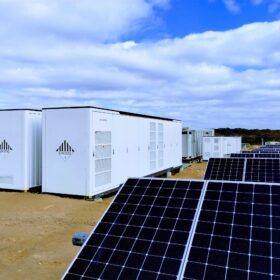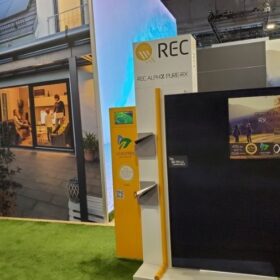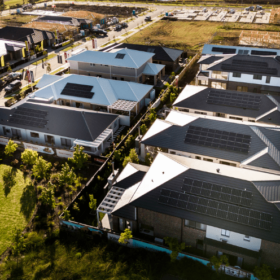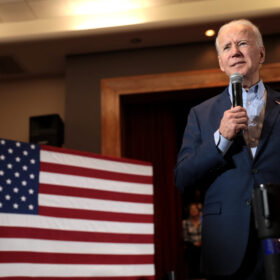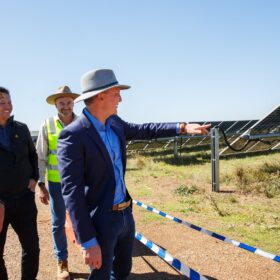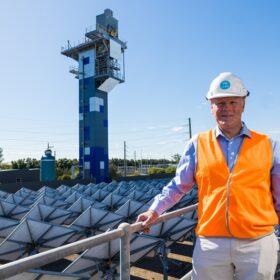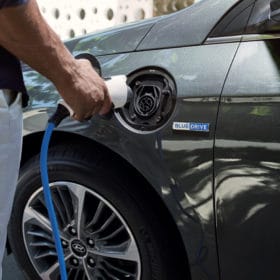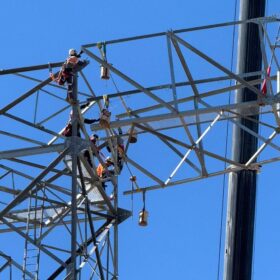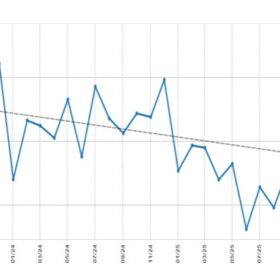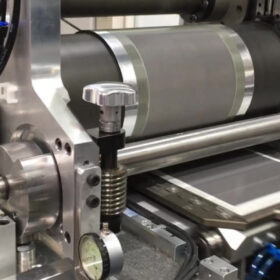Super fund teams with Birdwood to target smaller-scale solar and storage
Australian superannuation giant Aware Super has made a large-scale entry into the distributed renewable energy market, teaming with Melbourne-based Birdwood Energy in a venture specialising in smaller-scale solar and battery installations.
REC rolls out new 470 W rooftop solar panel in Australia
Singapore-based PV module manufacturer REC Group has launched in Australia a new series of rooftop solar panels with power ratings ranging from 450 W to 470 W and efficiencies up to 22.6%.
UNSW student team to push for change in World Solar Challenge
The solar-powered Stella Terra test car from The Netherlands’ Eindhoven University has just completed a 1,000 kilometre test drive from northern Morocco to the Sahara. In Australia, the solar car racing team from the University of New South Wales says the real challenge is to find new ways to push the boundaries of solar car races.
Regulator calls for more large-scale renewables as rooftop solar shines
Rooftop solar generation continues to achieve record levels across the National Electricity Market but the Australian Energy Regulator has warned of a “pressing need for new investment” in large-scale renewable energy assets to keep pace with the energy transition.
Solax introduces hybrid inverter for 200% PV system oversizing
Solax claims its new hybrid inverters can oversize PV systems by 200%, making them an ideal solution for commercial rooftop installations. There are five versions, featuring rated power outputs ranging from 15 kW to 30 kW.
Industry groups set 2026 target for EU-US hydrogen trade
The US Department of Energy has allocated USD 7 billion ($11 billion) for seven Regional Clean Hydrogen Hubs (H2Hubs) to deploy commercial-scale clean hydrogen, while the Mission Possible Partnership, RMI, Systemiq, Power2X, and industry leaders have set up the Transatlantic Clean Hydrogen Trade Coalition (H2TC) to ship US clean hydrogen to Europe by 2026.
Australia’s solar resource to increase in east, decrease in west as climate warms: UNSW study
Researchers at UNSW have modelled how shifts in Australia’s future weather patterns due to climate change will impact the nation’s solar resource, including its dependability. They found solar reliability may increase parts of Eastern Australia by 2099, but the outlook worsened in Western and Northern Australia.
CSIRO uses ‘falling’ ceramic particles used to store energy at extreme temperatures
Falling ceramic particles less than half a millimetre in size have been used by Australia’s national science agency, the CSIRO, to store energy in a concentrated solar thermal system. The team recently achieved a temperature of 803°C using the process at its pilot plant in NSW.
Not so fast… the Bouldercombe Battery is not yet back into service after the fire
On September 26, the Bouldercombe battery in Queensland caught fire during its commissioning process. Now, it is being reported the battery facility is already back up and running – which isn’t quite the case, WattClarity’s Paul McArdle explains.
High Court rules Victoria’s EV tax is ‘invalid’
Victoria’s High Court has deemed the Victorian government’s tax on electric vehicles “invalid”, saying Australia’s Constitution enshrines that only the Commonwealth government has the power to enforce such taxes.
